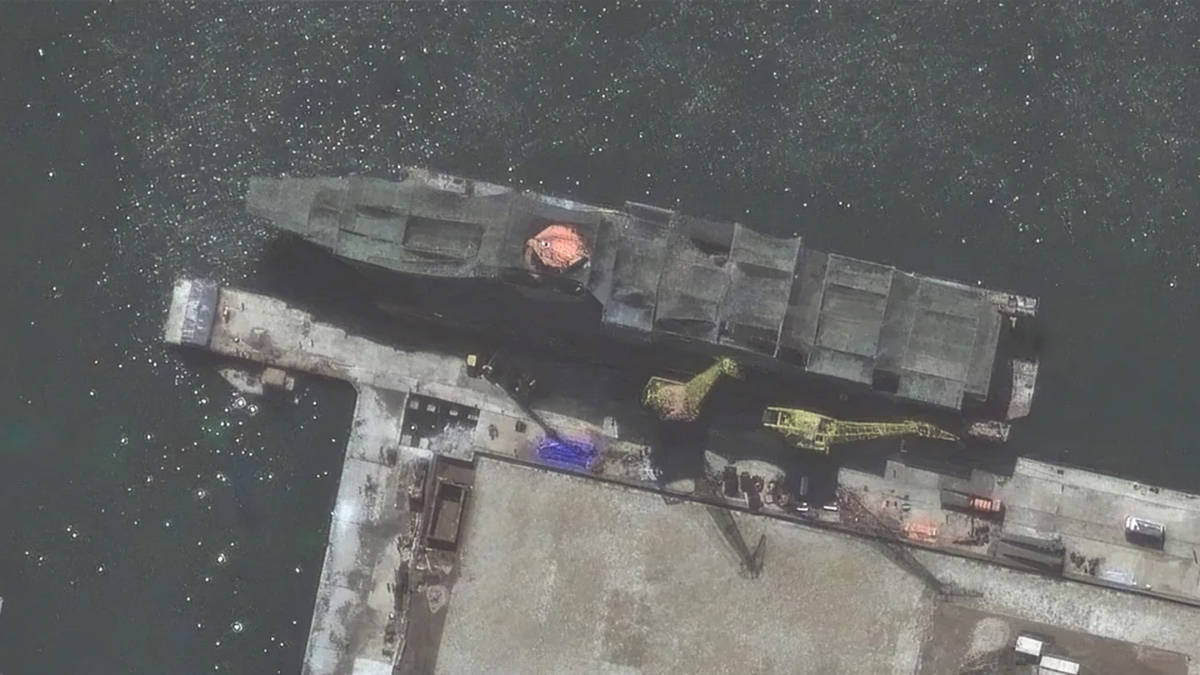Recent satellite imagery has uncovered North Korea’s ambitious naval project—a vessel that military analysts identify as the regime’s most significant warship endeavor to date. The construction at Nampo shipyard represents a substantial leap in Pyongyang’s maritime capabilities, continuing Kim Jong Un’s pattern of military expansion amid international sanctions.
North Korea’s naval ambitions revealed through satellite technology
High-resolution satellite images captured in early 2025 have exposed an unprecedented development in North Korean naval capabilities. The images show a vessel under construction that measures approximately 140 meters (459 feet) in length, making it twice the size of any previous North Korean warship. Located at the Nampo shipyard on the country’s western coast near Pyongyang, this project signals a significant advancement in the secretive nation’s maritime military capacity.
According to analysis by experts Joseph Bermudez Jr. and Jennifer Jun at the Center for Strategic and International Studies, this frigate represents the largest naval vessel ever manufactured within North Korean borders. The construction site’s strategic location provides North Korea with direct access to the Yellow Sea, potentially expanding the regime’s operational reach.
Similar to how Soyuz MS-27 recently docked at the International Space Station, bringing new capabilities to orbit, this vessel appears designed to elevate North Korea’s naval presence to unprecedented levels. Military analysts suggest the ship could significantly alter regional maritime power dynamics once completed.
The vessel’s construction aligns with Kim Jong Un’s publicly stated priorities to strengthen North Korea’s defensive capabilities against what he perceives as external threats, particularly from the United States and its allies in the region.
Technical specifications and military implications
Maritime defense experts have assessed the vessel as likely belonging to a 6,000-7,000 ton class warship capable of carrying approximately 10 missiles. Professor Moon Keun-sik from Seoul’s Hanyang University, a prominent South Korean submarine expert, notes that the terminology used by North Korean officials—referring to “strategic guided missiles”—typically indicates nuclear-capable weapon systems designed for long-range strikes.
This development follows North Korea’s March announcement regarding a purported nuclear-powered submarine, complete with published images of what the regime described as a “nuclear-powered strategic guided missile submarine.” The combined naval advancements suggest a coordinated effort to build a more formidable maritime deterrent.
The technical capabilities of the new warship remain subject to debate among international observers. Key assessments include:
Displacement estimated between 6,000-7,000 tons
Length of approximately 140 meters (459 feet)
Potential missile capacity of around 10 launch systems
Likely designed for nuclear-capable weapons deployment
Unknown electronic warfare and defense systems
When considering technological advancements in naval warfare, it’s worth noting that innovations often cross boundaries between military and civilian applications. For instance, the ESA’s precision timekeeping technology aboard the ISS represents similar cutting-edge development, though applied to scientific rather than military purposes.
North Korean Naval DevelopmentEstimated CapabilityRegional ImpactNew FrigateStrategic missile deploymentEnhanced strike rangeNuclear SubmarineExtended underwater operationsIncreased deterrenceCombined Naval ForceMulti-domain operationsRegional power shift
Strategic context and international reactions
This naval expansion represents just one facet of Kim Jong Un’s broader military modernization program. In recent years, North Korea has accelerated testing of intercontinental ballistic missiles (ICBMs) that now demonstrate the potential range to reach any location within the continental United States. These developments, combined with the new naval assets, reflect a comprehensive strategy to enhance North Korea’s military posture despite international sanctions and diplomatic isolation.
The international community has responded with varied perspectives on the significance of these naval developments. While some military analysts express serious concern about the strategic implications, others on social media platforms like Reddit have questioned the true capabilities of North Korean military technology, suggesting the vessel may incorporate outdated systems despite its impressive size.
One commentator noted: “Bigger doesn’t mean better. There hasn’t been real naval warfare since WW2. Nuclear stealth submarines have ruled the seas for over 20 years.” Others compared the likely technological sophistication to 1990s-era Western warships, indicating skepticism about North Korea’s ability to match current international naval standards.
The construction occurs against a backdrop of technological competition worldwide, including in space exploration where countries like China demonstrate growing capabilities. Their Tianwen-2 asteroid sample return mission exemplifies how nations increasingly leverage advanced technologies across multiple domains.
While North Korea advances its naval program, other nations continue developing their own military technologies. Recent incidents like when SpaceX’s Starship 36 experienced an explosion during testing demonstrate that even advanced nations face challenges in developing cutting-edge systems.
Despite varying assessments of North Korea’s technological capabilities, the construction of this unprecedented warship clearly indicates Kim Jong Un’s determination to establish his nation as a more significant naval power. Whether the vessel will ultimately deliver the strategic impact North Korean leadership envisions remains to be seen, but its construction alone represents a notable milestone in the regime’s military development trajectory.

